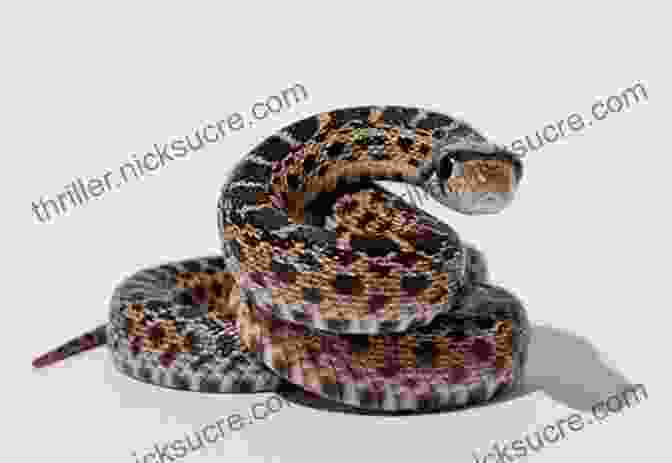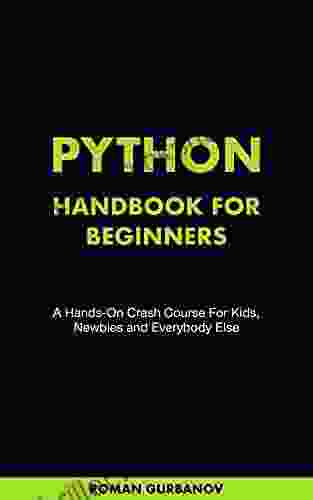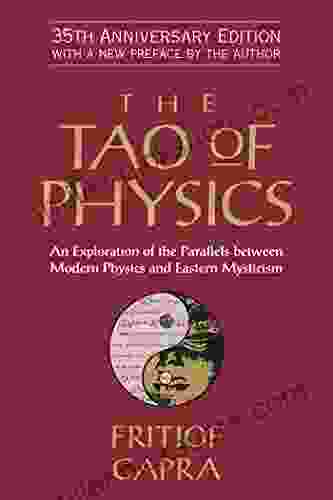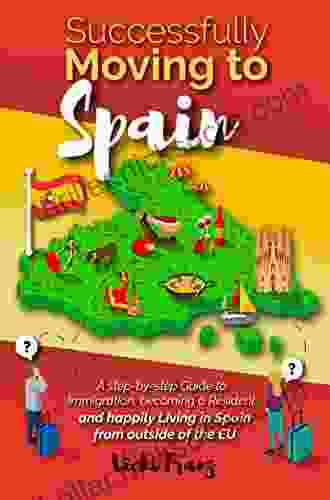The Comprehensive Python Handbook for Beginners: A Step-by-Step Guide to Mastering Python

Welcome to the ultimate Python handbook for beginners! This comprehensive guide is meticulously crafted to empower you with a solid foundation in Python, the versatile programming language that opens doors to countless opportunities. Whether you're an aspiring developer, a data enthusiast, or simply curious about programming, this handbook will equip you with the knowledge and skills you need to excel in your Python journey.
Chapter 1: Getting Started with Python
1.1 Understanding Python's Features and Applications
Python is a high-level, general-purpose programming language known for its readability, simplicity, and versatility. It is widely used in various domains, including web development, data science, artificial intelligence, and scripting.
5 out of 5
| Language | : | English |
| File size | : | 479 KB |
| Text-to-Speech | : | Enabled |
| Enhanced typesetting | : | Enabled |
| Word Wise | : | Enabled |
| Print length | : | 169 pages |
| Lending | : | Enabled |
| Screen Reader | : | Supported |

1.2 Installing and Setting Up Python
To begin your Python adventure, you must first install it on your computer. This process is straightforward and well-documented on the official Python website. Ensure that you choose the appropriate version for your operating system.
Once Python is installed, you can verify its presence and check its version by opening your terminal or command prompt and typing "python --version".
Chapter 2: Fundamentals of Python Syntax
2.1 Variables and Data Types
Variables in Python represent named containers that store data values. They can be of different data types, such as strings, numbers, lists, and dictionaries. Understanding data types is crucial for efficient data manipulation.
# Example variables: name = "John Doe" age = 302.2 Operators and Expressions
Python provides a comprehensive set of operators that enable you to perform arithmetic, logical, and assignment operations on variables and values. Expressions combine variables and operators to form statements that produce results.
# Example expression: total = price * quantity2.3 Control Flow Statements
Control flow statements allow you to control the execution flow of your Python programs. Conditional statements (e.g., if-else) evaluate conditions and execute specific code blocks accordingly, while loops (e.g., for, while) iterate over sequences of data.
# Example conditional statement: if score >= 80: print("Congratulations! You passed.")Chapter 3: Collections and Data Structures
3.1 Lists: Ordered Collections of Elements
Lists are mutable, ordered sequences of elements that can store any type of data. They are versatile and extensively used for data manipulation and storage.
# Example list: my_list = [1, "apple", True]3.2 Tuples: Immutable Collections of Elements
Tuples are immutable, ordered sequences similar to lists, but their elements cannot be modified once created. They are primarily used for representing data that should not change.
# Example tuple: my_tuple = ("John", 30, "USA")3.3 Dictionaries: Collections of Key-Value Pairs
Dictionaries are mutable collections that store key-value pairs. Keys are unique identifiers, and values can be any type of data. Dictionaries are essential for organizing and accessing data efficiently.
# Example dictionary: my_dictionary = {"name": "John", "age": 30, "country": "USA"}Chapter 4: Essential Python Modules
4.1 Importing Modules
Python provides a vast library of modules that extend its functionality. Importing modules allows you to access predefined functions, classes, and data types.
# Example module import: import math4.2 Working with Files
Python's file handling capabilities enable you to read, write, and manipulate files. This module is invaluable for data storage and retrieval operations.
# Example file handling: with open("data.txt", "r") as file: data = file.read()4.3 Error Handling
Error handling mechanisms in Python allow you to anticipate and handle runtime errors, ensuring graceful program execution even in the presence of exceptions.
# Example error handling: try: # Code that may raise an error except Exception as e: # Handle the errorChapter 5: Advanced Python Concepts
5.1 Object-Oriented Programming
Object-oriented programming (OOP) is a paradigm that emphasizes the use of objects and classes to structure code. It promotes encapsulation, inheritance, and polymorphism, leading to reusable, maintainable, and extensible programs.
# Example class: class Person: def __init__(self, name, age): self.name = name self.age = age5.2 Python Iterators and Generators
Iterators and generators provide a memory-efficient way to iterate over sequences of data. Iterators return one element at a time, while generators pause execution between iterations, allowing for lazy evaluation.
# Example generator: def my_generator(): for i in range(10): yield i5.3 Python Decorators
Decorators are a powerful tool that allows you to modify the behavior of functions and classes without altering their source code. They are extensively used for logging, caching, and adding functionality to existing code.
# Example decorator: def my_decorator(func): def wrapper(*args, **kwargs): # Code before function execution result = func(*args, **kwargs) # Code after function execution return result return wrapperChapter 6: Real-World Python Applications
6.1 Web Development with Python
Python's versatility extends to web development, where it powers popular frameworks such as Django and Flask. These frameworks enable rapid and efficient development of dynamic and interactive web applications.
# Example Django web application: from django.contrib.auth.models import User from django.urls import path from django.http import HttpResponse def home(request): users = User.objects.all() return HttpResponse(users) urlpatterns = [ path('home/', home),]6.2 Data Science with Python
Python has become a dominant force in data science, thanks to its extensive data analysis and manipulation capabilities. Libraries like NumPy, Pandas, and Matplotlib provide powerful tools for data preprocessing, model training, and data visualization.
# Example data analysis with Pandas: import pandas as pd df = pd.read_csv("data.csv") df["total"] = df["price"] * df["quantity"] df.groupby("product").sum()6.3 Machine Learning with Python
Python is widely recognized for its machine learning capabilities. Libraries like Scikit-learn and TensorFlow empower developers to build, train, and deploy machine learning models with ease.
# Example machine learning with Scikit-learn: from sklearn.linear_model import LinearRegression model = LinearRegression() model.fit(X, y) predictions = model.predict(X_test)Congratulations on completing this comprehensive Python handbook for beginners! By now, you have gained a solid foundation in Python syntax, data structures, and essential concepts. Remember, practice and exploration are key to mastering any programming language.
Continue to engage with Python by building projects, exploring its vast ecosystem of libraries, and contributing to the vibrant online community. As you progress in your Python journey, you will discover its immense potential and versatility, opening up countless opportunities for personal and professional growth.
Happy coding!
5 out of 5
| Language | : | English |
| File size | : | 479 KB |
| Text-to-Speech | : | Enabled |
| Enhanced typesetting | : | Enabled |
| Word Wise | : | Enabled |
| Print length | : | 169 pages |
| Lending | : | Enabled |
| Screen Reader | : | Supported |
Do you want to contribute by writing guest posts on this blog?
Please contact us and send us a resume of previous articles that you have written.
 Fiction
Fiction Non Fiction
Non Fiction Romance
Romance Mystery
Mystery Thriller
Thriller SciFi
SciFi Fantasy
Fantasy Horror
Horror Biography
Biography Selfhelp
Selfhelp Business
Business History
History Classics
Classics Poetry
Poetry Childrens
Childrens Young Adult
Young Adult Educational
Educational Cooking
Cooking Travel
Travel Lifestyle
Lifestyle Spirituality
Spirituality Health
Health Fitness
Fitness Technology
Technology Science
Science Arts
Arts Crafts
Crafts DIY
DIY Gardening
Gardening Petcare
Petcare Porter Shimer
Porter Shimer Genie Reads
Genie Reads Chuanwei Li
Chuanwei Li Cindy Margolis
Cindy Margolis John Monaghan
John Monaghan Kevin Alexander
Kevin Alexander Jason Sandy
Jason Sandy Scott Zimmerman
Scott Zimmerman Harry Vardon
Harry Vardon Nathan Halberstadt
Nathan Halberstadt Paula Brackston
Paula Brackston Mark Powell
Mark Powell Jonathan H Turner
Jonathan H Turner Lee Mcintyre
Lee Mcintyre Thomas A Jacobs
Thomas A Jacobs Brett Hull
Brett Hull Wil Fleming
Wil Fleming Lucy Hopping
Lucy Hopping Sam Sorbo
Sam Sorbo Paul Carus
Paul Carus Inge Bell
Inge Bell Matt Parker
Matt Parker Patti Henry
Patti Henry Steven Shapin
Steven Shapin Jacques Vallee
Jacques Vallee Leslie Valiant
Leslie Valiant Erin Mckittrick
Erin Mckittrick Kathleen Bartholomew
Kathleen Bartholomew Ron Lieber
Ron Lieber James Miller
James Miller Natalia Ilyin
Natalia Ilyin Larry A Yff
Larry A Yff Christine Brennan
Christine Brennan Steven Verrier
Steven Verrier Jules Wake
Jules Wake Rob Vollman
Rob Vollman Htebooks
Htebooks Loyd Ellis
Loyd Ellis Steve Bromley
Steve Bromley Roach Mary
Roach Mary Matt Davids
Matt Davids Shannon Warden
Shannon Warden Steve Oakes
Steve Oakes Clyde Soles
Clyde Soles P A Johnson
P A Johnson Hiram Bingham
Hiram Bingham Janae M Robinson
Janae M Robinson John D Couch
John D Couch Pat Manocchia
Pat Manocchia Judith A Owens
Judith A Owens Joyce Bas
Joyce Bas Kevin Marx
Kevin Marx John Moren
John Moren Derek Blasberg
Derek Blasberg Sara Elliott Price
Sara Elliott Price Marc Bona
Marc Bona Janice L Raymond
Janice L Raymond Sue Wieger
Sue Wieger Colette Harris
Colette Harris Eze Ugbor
Eze Ugbor Diane Ravitch
Diane Ravitch T D Wilson
T D Wilson Edith Hall
Edith Hall Joe Grant
Joe Grant Iwan Rhys Morus
Iwan Rhys Morus Mohammad F Anwar
Mohammad F Anwar Lukas M Verburgt
Lukas M Verburgt David Mcclung
David Mcclung Gjoko Muratovski
Gjoko Muratovski Trish Kuffner
Trish Kuffner Rob Collins
Rob Collins Michael Ruhlman
Michael Ruhlman Jane Albert
Jane Albert Adrienne Onofri
Adrienne Onofri Emily Lauren Dick
Emily Lauren Dick Ksenia K
Ksenia K Elsevier
Elsevier Jonathan Grix
Jonathan Grix Geoffrey Simpson
Geoffrey Simpson Jason Brick
Jason Brick Sandra M Nettina
Sandra M Nettina Ian Tuhovsky
Ian Tuhovsky Santari Green
Santari Green Manfred Theisen
Manfred Theisen Curtis Wilkie
Curtis Wilkie Ursula Hackett
Ursula Hackett Nicole Morales Lm Cpm
Nicole Morales Lm Cpm Chuck Callaway
Chuck Callaway Jez Cajiao
Jez Cajiao D S Malik
D S Malik Nicholas Bjorn
Nicholas Bjorn David Schoem
David Schoem Kerry Mcdonald
Kerry Mcdonald Kate S Martin
Kate S Martin Zigzag English
Zigzag English Brian W Kernighan
Brian W Kernighan Lori Lyons
Lori Lyons Ji Kim
Ji Kim Ronald M Rapee
Ronald M Rapee Maggie Dallen
Maggie Dallen Jeannie Burlowski
Jeannie Burlowski Patrick Garbin
Patrick Garbin Dave Cutcher
Dave Cutcher Mary Strand
Mary Strand David Flanagan
David Flanagan David Hoffman
David Hoffman J F James
J F James Chase Hassen
Chase Hassen Gustav Meyrink
Gustav Meyrink Kyle Rohrig
Kyle Rohrig Douglas Wood
Douglas Wood James Dean
James Dean Guido W Imbens
Guido W Imbens Christopher Ketcham
Christopher Ketcham Clayton King
Clayton King Claudia M Gold
Claudia M Gold Mary Morrison
Mary Morrison Hal R Varian
Hal R Varian Mark Johnston
Mark Johnston Dr Nanhee Byrnes
Dr Nanhee Byrnes Melinda Tankard Reist
Melinda Tankard Reist Sujit Sivasundaram
Sujit Sivasundaram Kaylene Yoder
Kaylene Yoder Jimmie Holland
Jimmie Holland Nicholas S Howe
Nicholas S Howe Terence Tao
Terence Tao D Enette Larson Meyer
D Enette Larson Meyer Brett Stewart
Brett Stewart Sara Gaviria
Sara Gaviria Jean Nayar
Jean Nayar Damien Cox
Damien Cox Peter Zuckerman
Peter Zuckerman Steve Wiegand
Steve Wiegand David Jason
David Jason Timothy A Sisemore
Timothy A Sisemore Mary Heffernan
Mary Heffernan Brittany Cavallaro
Brittany Cavallaro Inger Mewburn
Inger Mewburn Joseph Burbridge
Joseph Burbridge J Wayne Fears
J Wayne Fears Richard Post
Richard Post G E R Lloyd
G E R Lloyd Gerald R Allen
Gerald R Allen Steven W Vannoy
Steven W Vannoy Samuel Greenberg
Samuel Greenberg Lana Peek
Lana Peek Lucas Chancel
Lucas Chancel Tim Falconer
Tim Falconer Kathleen Cushman
Kathleen Cushman Carol Kaesuk Yoon
Carol Kaesuk Yoon Ernle Bradford
Ernle Bradford Brogan Steele
Brogan Steele Sarah Lamb
Sarah Lamb John Mcenroe
John Mcenroe Jaime Flowers
Jaime Flowers Estelle Dautry
Estelle Dautry Mike Adams
Mike Adams James A Whittaker
James A Whittaker Mick Conefrey
Mick Conefrey Mark Lazerus
Mark Lazerus Jhenah Telyndru
Jhenah Telyndru T J Tomasi
T J Tomasi Nate Allen
Nate Allen Grete Waitz
Grete Waitz Harold Gatty
Harold Gatty Brion Toss
Brion Toss Peter Allison
Peter Allison Stephanie Sarkis
Stephanie Sarkis David M Ewalt
David M Ewalt Calvin Trillin
Calvin Trillin Dinesh Kumar Goyal
Dinesh Kumar Goyal George Case
George Case Dan Jones
Dan Jones Jameswesley Rawles
Jameswesley Rawles Megan Kelley Hall
Megan Kelley Hall E G Richards
E G Richards Ted Franklin Belue
Ted Franklin Belue Colleen Doyle Bryant
Colleen Doyle Bryant William Trubridge
William Trubridge Marguerite Henry
Marguerite Henry Michael Sullivan Iii
Michael Sullivan Iii Carlo Zen
Carlo Zen David Barrett
David Barrett Lucia Guglielminetti
Lucia Guglielminetti Mitchel P Roth
Mitchel P Roth Bruce Macdonald
Bruce Macdonald Jd Tanner
Jd Tanner James M Jones
James M Jones Thomas Malory
Thomas Malory M A Hayat
M A Hayat Judy H Wright
Judy H Wright Richard Blais
Richard Blais Lenore Skenazy
Lenore Skenazy John Fraser Hart
John Fraser Hart Matt Morton
Matt Morton Brian Herne
Brian Herne Danny Staple
Danny Staple Stuart Woods
Stuart Woods Steve Guest
Steve Guest S Connolly
S Connolly Arthur Scott Bailey
Arthur Scott Bailey Lee Alan Dugatkin
Lee Alan Dugatkin Nibedit Dey
Nibedit Dey Dr Lena Edwards
Dr Lena Edwards Howtodressage
Howtodressage Dave Ramsey
Dave Ramsey Karen Ward Mahar
Karen Ward Mahar Gerald L Schroeder
Gerald L Schroeder Kira Breed Wrisley
Kira Breed Wrisley Sriman Sharma
Sriman Sharma David Hatcher Childress
David Hatcher Childress Jeanne Flavin
Jeanne Flavin Martin Wells
Martin Wells Dusan Petkovic
Dusan Petkovic Kindle Edition
Kindle Edition Salima Ikram
Salima Ikram Jessica Minahan
Jessica Minahan William Albert Robinson
William Albert Robinson Richard Kasper
Richard Kasper Jemar Tisby
Jemar Tisby Malcolm Hebron
Malcolm Hebron Marc J Reilly
Marc J Reilly Pittacus Lore
Pittacus Lore Sandy Jones
Sandy Jones Phyllis Books
Phyllis Books Luis Preto
Luis Preto Molly Caldwell Crosby
Molly Caldwell Crosby Mariana Monteiro
Mariana Monteiro Collins O Onwe
Collins O Onwe Kusha Karvandi
Kusha Karvandi Harry Bauld
Harry Bauld David Levithan
David Levithan Florence Weiser
Florence Weiser William Souder
William Souder Jeannette De Wyze
Jeannette De Wyze Jackie Freeman
Jackie Freeman Helen Zee
Helen Zee Matt Wastradowski
Matt Wastradowski Matthew Desmond
Matthew Desmond James D Tabor
James D Tabor Rachel Love Nuwer
Rachel Love Nuwer Karen Wilkinson
Karen Wilkinson Dr Alison Dibarto Goggin
Dr Alison Dibarto Goggin Ethan Bezos
Ethan Bezos Kent Hoffman
Kent Hoffman Brett Cohen
Brett Cohen Masaaki Kijima
Masaaki Kijima Soong Chan Rah
Soong Chan Rah Michael Masters
Michael Masters Julie Cangialosi
Julie Cangialosi Bryan Berard
Bryan Berard Phillip Stephen Schulz
Phillip Stephen Schulz Jonti Marks
Jonti Marks Christopher Clarey
Christopher Clarey Piero Ferrucci
Piero Ferrucci Jodi Aman
Jodi Aman Steven Emanuel
Steven Emanuel Jennifer Comeaux
Jennifer Comeaux Mark William
Mark William Garrett Redfield
Garrett Redfield Megan Davidson
Megan Davidson Mark J Ferrari
Mark J Ferrari Michael Mason
Michael Mason Michael Sean Comerford
Michael Sean Comerford 1st Ed 2018 Edition Kindle Edition
1st Ed 2018 Edition Kindle Edition Genevieve Bardwell
Genevieve Bardwell Nehemia Gordon
Nehemia Gordon Scott Haines
Scott Haines Dava Sobel
Dava Sobel Matt Doeden
Matt Doeden Emilee Day
Emilee Day Lisa Druxman
Lisa Druxman Courtney Macavinta
Courtney Macavinta Cassandra Overby
Cassandra Overby Cecilia Twinch
Cecilia Twinch Lisa Scottoline
Lisa Scottoline Rick J Scavetta
Rick J Scavetta Matt Schifferle
Matt Schifferle Loan Le
Loan Le Keith Ryan Cartwright
Keith Ryan Cartwright Meg Cabot
Meg Cabot Heather Rose
Heather Rose Doug Peacock
Doug Peacock Michel Odent
Michel Odent Pedro Sarmiento De Gamboa
Pedro Sarmiento De Gamboa Kelle James
Kelle James Jacob Boehme
Jacob Boehme Eduardo Montano
Eduardo Montano Breanna Hayse
Breanna Hayse Alan D Moore
Alan D Moore Alex Horne
Alex Horne Chukwuma Eleodimuo
Chukwuma Eleodimuo Nadim Saad
Nadim Saad Douglas R Hofstadter
Douglas R Hofstadter St Teresa Of Avila
St Teresa Of Avila Stephen Hawking
Stephen Hawking Rob Coppolillo
Rob Coppolillo Maria Sharapova
Maria Sharapova Steven Cross
Steven Cross Daniel Dell Uomo
Daniel Dell Uomo Renee Jain
Renee Jain Kara Forney
Kara Forney Joan Nathan
Joan Nathan Lily Raff Mccaulou
Lily Raff Mccaulou Keith Foskett
Keith Foskett Robin Dunbar
Robin Dunbar Gabriel F Federico
Gabriel F Federico John Wesson
John Wesson Charlie Francis
Charlie Francis Joanna Faber
Joanna Faber Michael A Tompkins
Michael A Tompkins Mike Weatherstone
Mike Weatherstone Celina Grace
Celina Grace Nora Roberts
Nora Roberts Brian Reddington
Brian Reddington Tom Cunliffe
Tom Cunliffe Daniel Vaughan
Daniel Vaughan Jacqueline Houtman
Jacqueline Houtman Sonja Schwartzbach
Sonja Schwartzbach Joanne M Flood
Joanne M Flood Esther Hicks
Esther Hicks Cecelia Ahern
Cecelia Ahern Ilchi Lee
Ilchi Lee Paul Farmer
Paul Farmer Maurice Herzog
Maurice Herzog Ivan Savov
Ivan Savov John A Fortunato
John A Fortunato Robert Ullman
Robert Ullman Caitlyn Dare
Caitlyn Dare Peter Wacht
Peter Wacht Elizabeth Dupart
Elizabeth Dupart Don L Gates
Don L Gates Grace Mariana Rector
Grace Mariana Rector Claudia Gray
Claudia Gray Elliot Davis
Elliot Davis John M Taylor
John M Taylor Samantha Michaels
Samantha Michaels Mike Eastman
Mike Eastman John Bradshaw
John Bradshaw Tadashi Yoshimura
Tadashi Yoshimura Mark Seemann
Mark Seemann Richard Hingley
Richard Hingley Bruce A Fenderson
Bruce A Fenderson Elwyn Hartley Edwards
Elwyn Hartley Edwards Daniel Bagur
Daniel Bagur Juliet Miller
Juliet Miller Scott Reed
Scott Reed Brian Kilmeade
Brian Kilmeade Mark Howard
Mark Howard Gene Kritsky
Gene Kritsky Carol Walters
Carol Walters Dr Monique Thompson Dha Lpc
Dr Monique Thompson Dha Lpc Cal Ripken
Cal Ripken Richard Bass
Richard Bass Lewis Black
Lewis Black Sunil Tanna
Sunil Tanna Deborah Shouse
Deborah Shouse Scott Hawthorn
Scott Hawthorn Warren Hansen
Warren Hansen Lisa Leake
Lisa Leake Victor A Bloomfield
Victor A Bloomfield Frederick Grinnell
Frederick Grinnell Mahmood Mamdani
Mahmood Mamdani Rosalyn Sheehy
Rosalyn Sheehy Christy Teglo
Christy Teglo Bruce Lee
Bruce Lee Deepak Chopra
Deepak Chopra J R Mathews
J R Mathews Pastor Ahyh
Pastor Ahyh Guy P Harrison
Guy P Harrison Joanna Sayago Golub
Joanna Sayago Golub Rich Osthoff
Rich Osthoff Linda Carter
Linda Carter David Sinclair
David Sinclair Don Brown
Don Brown Joyce Harper
Joyce Harper Kalynn Bayron
Kalynn Bayron Natalia Rojas
Natalia Rojas Paul Simpson
Paul Simpson Ryan M Cleckner
Ryan M Cleckner Frederick L Coolidge
Frederick L Coolidge Grace Mccready
Grace Mccready Debra Fine
Debra Fine Miguel Crespo
Miguel Crespo O S Hawkins
O S Hawkins Elizabeth Davis
Elizabeth Davis Michael O Emerson
Michael O Emerson Melissa Trevathan
Melissa Trevathan Dan Washburn
Dan Washburn Vincent W Davis
Vincent W Davis Robert Wright
Robert Wright J C Cervantes
J C Cervantes Seb Falk
Seb Falk Smart Edition
Smart Edition Susan F Paterno
Susan F Paterno Tyler Hamilton
Tyler Hamilton Martin Odersky
Martin Odersky Gerson S Sher
Gerson S Sher Jackson T Markbrown
Jackson T Markbrown Kenneth Paul Rosenberg
Kenneth Paul Rosenberg Steven Hugg
Steven Hugg Peggy Tharpe
Peggy Tharpe David Wootton
David Wootton Mitt Romney
Mitt Romney Dan Fullerton
Dan Fullerton Tom M Apostol
Tom M Apostol Luis Angel Echeverria
Luis Angel Echeverria Denise Long
Denise Long Jeanne Ellis Ormrod
Jeanne Ellis Ormrod Dr Faith G Harper
Dr Faith G Harper Heyward Coleman
Heyward Coleman Bernard Darwin
Bernard Darwin Roman Gurbanov
Roman Gurbanov Phil Williams
Phil Williams Cpt Exam Prep Team
Cpt Exam Prep Team Laurie A Watkins
Laurie A Watkins Rahul Jandial
Rahul Jandial Grace Friedman
Grace Friedman Fritjof Capra
Fritjof Capra Kate Mcmillan
Kate Mcmillan Paul Weamer
Paul Weamer Emil Frlez
Emil Frlez Michael Omi
Michael Omi Bret Stetka
Bret Stetka Brooks Blevins
Brooks Blevins Martin A Lee
Martin A Lee Caitlin Flanagan
Caitlin Flanagan Della Ata Khoury
Della Ata Khoury John Mclachlan
John Mclachlan Samuel Arbesman
Samuel Arbesman Brian R King
Brian R King Colleen Houck
Colleen Houck Dawna Markova
Dawna Markova James Kaiser
James Kaiser Karl F Kuhn
Karl F Kuhn Murray Shukyn
Murray Shukyn Lucinda Scala Quinn
Lucinda Scala Quinn Kicki Hansard
Kicki Hansard David Barrie
David Barrie Nicholas Gallo
Nicholas Gallo Peggy Kaye
Peggy Kaye Jennifer Block
Jennifer Block Paula Span
Paula Span Stephanie Perkins
Stephanie Perkins Megan Whalen Turner
Megan Whalen Turner Eric Michael
Eric Michael Jay H Lefkowitch
Jay H Lefkowitch Rachel Mcgrath
Rachel Mcgrath Brian Noyes
Brian Noyes Joanna Philbin
Joanna Philbin Thao Te
Thao Te David Hackett Fischer
David Hackett Fischer Michael Shaw
Michael Shaw Leigh Pearson
Leigh Pearson Sean Michael Wilson
Sean Michael Wilson Cheryl Diamond
Cheryl Diamond Vicki Franz
Vicki Franz William Shakespeare
William Shakespeare Joel Ingersoll
Joel Ingersoll Jeremy J Baumberg
Jeremy J Baumberg John Jeffries Martin
John Jeffries Martin Kathleen Taylor
Kathleen Taylor Wilborn Hampton
Wilborn Hampton Khalid Khashoggi
Khalid Khashoggi Keith Ammann
Keith Ammann Jp Kriya
Jp Kriya Steven Trustrum
Steven Trustrum George Olsen
George Olsen Charles Todd
Charles Todd James Floyd Kelly
James Floyd Kelly Tobe Melora Correal
Tobe Melora Correal Einat L K
Einat L K Brian Gewirtz
Brian Gewirtz Brienne Murk
Brienne Murk F Brent Neal
F Brent Neal Catherine Shainberg
Catherine Shainberg Karen E Mcconnell
Karen E Mcconnell Stephen Wood
Stephen Wood Kazumi Tabata
Kazumi Tabata Steve Schwartz
Steve Schwartz Henry Worsley
Henry Worsley Richard A Jaffe
Richard A Jaffe Lindsey Schlessinger
Lindsey Schlessinger Carol Newell
Carol Newell Charles Wilson
Charles Wilson Neil S Jacobson
Neil S Jacobson Tim Dunn
Tim Dunn Ned Mcintosh
Ned Mcintosh Milne Cc Pocock
Milne Cc Pocock Laura A Jana
Laura A Jana Patricia Wooster
Patricia Wooster Michael Barkun
Michael Barkun Oded Galor
Oded Galor Joseph Ewing
Joseph Ewing John Major Jenkins
John Major Jenkins David Murray
David Murray Rich Cohen
Rich Cohen Nancy Boyd Franklin
Nancy Boyd Franklin Eric R Dodge
Eric R Dodge John Connelly
John Connelly F R Lifestyle
F R Lifestyle Martin Sternstein
Martin Sternstein Melanie Challenger
Melanie Challenger Cal Pater
Cal Pater Derick Lugo
Derick Lugo Krishna Godhania
Krishna Godhania Megan Smolenyak
Megan Smolenyak Bonnie Henderson
Bonnie Henderson D Levesque
D Levesque Roshani Chokshi
Roshani Chokshi Rick Steves
Rick Steves Varg Freeborn
Varg Freeborn Scott Jurek
Scott Jurek Steve Williams
Steve Williams John Cooper
John Cooper Adam Night
Adam Night Bobbi Conner
Bobbi Conner Nachole Johnson
Nachole Johnson Colleen Craig
Colleen Craig Sarah Kleck
Sarah Kleck Eric C Lindstrom
Eric C Lindstrom Marco Polo
Marco Polo Rory D Nelson
Rory D Nelson Shayla Black
Shayla Black Jay Asher
Jay Asher Toni Weschler
Toni Weschler Carol Dawson
Carol Dawson E L Konigsburg
E L Konigsburg David Cannon
David Cannon J R Harris
J R Harris Ann Imig
Ann Imig Daniel Bergner
Daniel Bergner Neil Postman
Neil Postman James Zug
James Zug Patty Wipfler
Patty Wipfler James O Prochaska
James O Prochaska Penny Alexander
Penny Alexander Jeremy Bradstreet
Jeremy Bradstreet Worth Books
Worth Books Jp Lepeley
Jp Lepeley Xavier Wells
Xavier Wells Diana J Mason
Diana J Mason Patrick Carnes
Patrick Carnes Jim White
Jim White Avery Faigenbaum
Avery Faigenbaum Brian Everitt
Brian Everitt Nick Heil
Nick Heil
Light bulbAdvertise smarter! Our strategic ad space ensures maximum exposure. Reserve your spot today!

 Fred FosterMemoir of Life in NASCAR and the Movies: A Journey of Speed, Silver Screens,...
Fred FosterMemoir of Life in NASCAR and the Movies: A Journey of Speed, Silver Screens,... F. Scott FitzgeraldFollow ·7.2k
F. Scott FitzgeraldFollow ·7.2k Blake BellFollow ·8.9k
Blake BellFollow ·8.9k Jeff FosterFollow ·10.1k
Jeff FosterFollow ·10.1k Anton ChekhovFollow ·3.5k
Anton ChekhovFollow ·3.5k Julian PowellFollow ·14.5k
Julian PowellFollow ·14.5k Salman RushdieFollow ·13.1k
Salman RushdieFollow ·13.1k Percy Bysshe ShelleyFollow ·13.7k
Percy Bysshe ShelleyFollow ·13.7k Douglas PowellFollow ·5.7k
Douglas PowellFollow ·5.7k

 Guillermo Blair
Guillermo Blair2nd Edition Revised And Expanded 2024: A Comprehensive...
The 2nd Edition Revised...

 Ronald Simmons
Ronald SimmonsDreaming of Ocean Cruising: A Voyage into Tranquility and...
For those seeking a respite from the mundane...

 Darren Nelson
Darren Nelson100 Nursing Practice Questions with Rationales to...
The NCLEX exam is a challenging but...

 Rex Hayes
Rex HayesMastering Bodyweight Training for Martial Arts: A...
For martial...

 Dillon Hayes
Dillon HayesIn The Land Of The Blue Poppies: A Literary Journey to...
Prologue: A Tapestry of...

 Eliot Foster
Eliot FosterCollege University Writing Super Review Flash Card Books:...
College University...
5 out of 5
| Language | : | English |
| File size | : | 479 KB |
| Text-to-Speech | : | Enabled |
| Enhanced typesetting | : | Enabled |
| Word Wise | : | Enabled |
| Print length | : | 169 pages |
| Lending | : | Enabled |
| Screen Reader | : | Supported |










